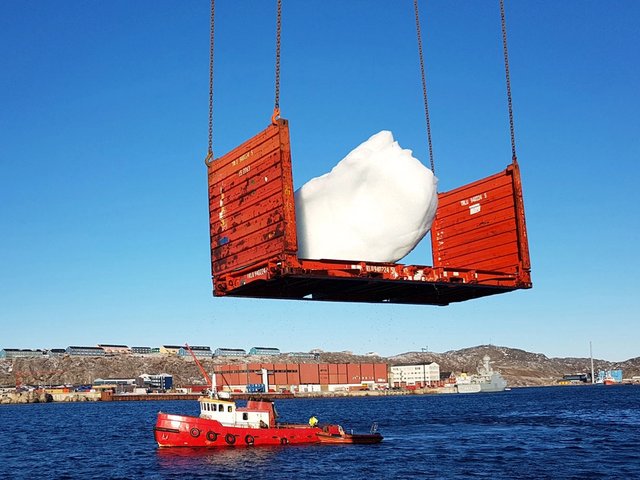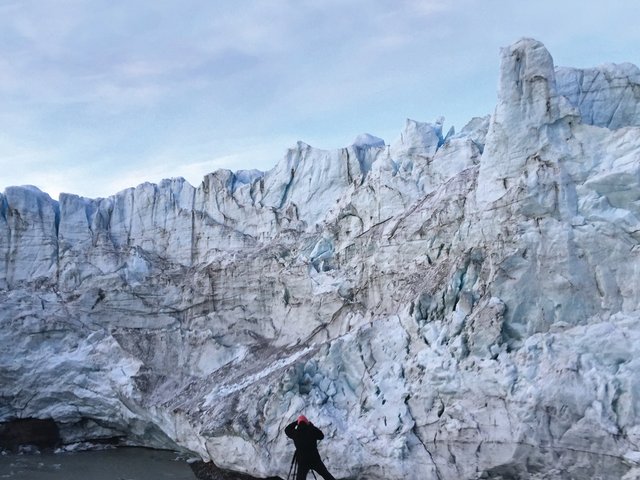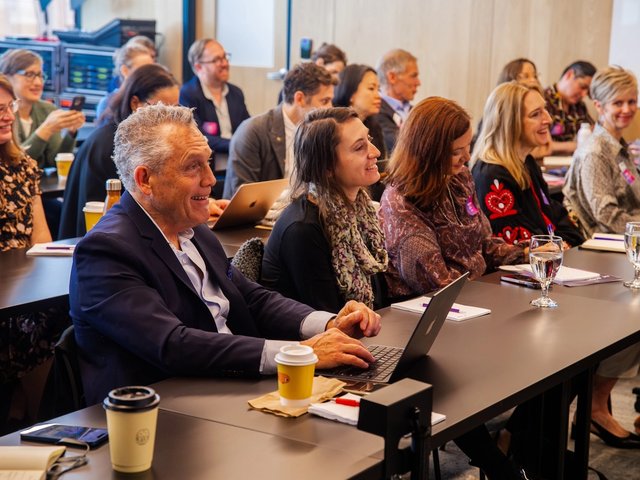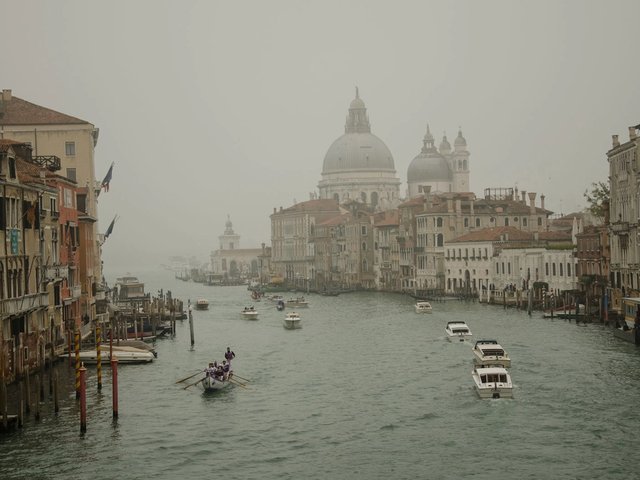“People want to see that science produces beauty, not just knowledge,” says Liane G. Benning, a biochemistry professor at the GFZ Helmholtz Centre for Geoscience in Potsdam, Germany, who is working at the frontline of climate observation. Acutely aware of the consequences of global warming, she is addressing both the urgent need to engage the public and the failure of the scientific community to reach beyond its bubble.
“We scientists are [bad] at explaining what we do, because we are always going into the complications a bit too fast,” she says. “And that’s why I like working with people like Michael, because we must do anything we can do to make people think [about climate change], especially if it’s through art, because art speaks to people.”
She is referring to Michael Najjar, a multimedia artist based in nearby Berlin, who contacted her after watching a documentary on German television. He had already begun his cool earth (since 2021) series, exploring the near-future ramifications of human-caused climate change, and the potential role of new technologies to slow or reverse it, making images in Iceland and Svalbard, at Norway’s northern extremity, that became the source material for his works. And now he had become fascinated with Deep Purple, a project funded by a European Research Council (ERC) Synergy grant to investigate a little-known phenomenon that is accelerating the melt of the Greenland ice sheet, and contributing significantly to the rising sea levels that are a threat to coastal communities worldwide.
Benning is one of the principal investigators on the project, which is named after areas of the ice sheet that are becoming increasingly deep purple in colour during melt season—a consequence of algal blooms that are colonising expanding areas of ice exposed by global warming. “The algae are smart,” she says. “They make their own sunscreen. And that sunscreen is a pigment. The problem is that everything they produce to protect themselves from UV exposure is dark, which makes the ice melt faster.”
Najjar was invited to join the team on an expedition last year to see for himself. “You see from the air, from the satellite images even, how the ice sheet is turning colour… And it’s really scary. It’s unstoppable. So we have to understand how fast this will develop; to integrate it into future climate models. And that’s [the team’s] goal.” He also travelled to Ilulissat, on Greenland’s west coast, 220 miles north of the Arctic Circle. “When you go to the Jakobshavn Glacier, you see these enormous icebergs—huge, like skyscrapers—calving into the Arctic Sea. You see the process. You see the result of these little cells on the ice sheet.”

Artist Michael Najjar
Courtesy the artist
However, the world has become inured to images of cascading icebergs, and the visual memes of environmental journalism, showing us polar bears cast adrift on floating ice. Najjar believes we need new images that trigger a profound response to begin an intellectual engagement with the viewer. “I’m trying to capture people’s attention and bring them to action,” he says. “That’s why collaboration with scientists is so important.”
He spent several days photographing the monumental ice formations of Disko Bay, navigating close to them in a small boat, mapping them in his own kind of way, then returning to his studio and working on the photographs and videos for months to make a reconstruction.
Cultivated by the technosphere
Works like arctic shield, a triptych that stretches more than 4m long, are typical of what he is trying to achieve, with their sense of uncanny familiarity that does not quite add up on closer inspection, treading a purposefully thin line between reality and simulation.
“It underpins the idea that this landscape is artificial, and that’s exactly what the whole story is about. The landscape that surrounds us is cultivated, brought into form by what scientists call the ‘technosphere’. It’s a shaped landscape. And the same is happening in Greenland, of course.”
“In contrast to having a journalist or a television crew with us,” Benning says, “what I like about Michael’s work is that he actually takes the stuff that we see and reconstructs it and makes images that are very evocative. I went to his studio, and he has this beautiful picture. You think it’s just a beautiful landscape, but it’s actually the hockey stick [graph], and this village will disappear as the sea levels rise.”
The work, titled rising seas, depicts a tiny coastal settlement sat perilously below a jagged mountain range, its constellation of lights dwarfed by the ominous collision of land and sea. It is made up of dozens of photographs that Najjar shot and then reconstructed so that the peakline of the mountains visualises the graph of global warming, tracking temperatures from 1850 on the far left, up to projections of a 4°C rise in 2100 on the extreme right.
“He looks at the same things that we do, but makes it into a different story,” Benning says. “And I absolutely love that.”






